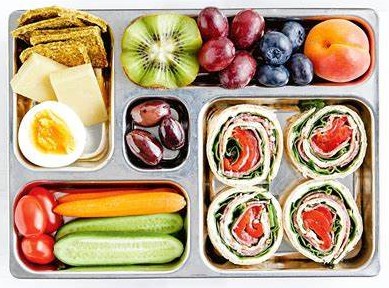The demand for smaller portions of fresh produce is reshaping retail and supply tactics. This shift is driven by changing household structures, evolving shopping habits, and a strong aversion to food waste. What started as a demand for snack-sized portions is now being embraced by a wide range of household segments for a variety of reasons, creating opportunities for retailers, marketers, and growers to cater to diverse consumer needs.
The Consumer Push for Smaller Portions
According to ABS data, 26% of Australian households are now single-person homes. This demographic tends to shop more frequently—on average 3.15 times per week (Freshlogic Mealpulse™). Consumers are mindful of their environmental impact, with 65% expressing a preference for smaller portions if it helps minimise food waste (Freshlogic Mealpulse™). This growing awareness is not only driving snack-sized purchases but also influencing other segments. For instance, empty nesters are opting for smaller, more convenient packs, often drawn to products that offer portion control and reduced waste. Originally designed as snack options, smaller packs now appeal to these households as well, fulfilling needs beyond just convenience.
The banana category exemplifies this shift, particularly with Cavendish bananas, where there is a growing demand for smaller portions. Around 10% of Cavendish bananas are sold as small bananas, which accounted for $123 million in retail value for the 12 months ending December 2024 (Freshlogic Category Analysis data). What began as a move towards offering convenient snacks is now a trend seen across a wide range of produce, including mini cucumbers, baby potatoes, baby capsicum, tomatoes, celery sticks, baby carrots, twin lettuce packs, and smaller apples.

The Bento Box Effect: Parental Expectations and Lunchbox Trends
Bento Box-style lunches have become the new norm for school children, reshaping how parents shop for fresh produce. These lunchboxes emphasise variety, balance, and portion control, leading parents to seek out smaller-sized fruit and vegetables that fit neatly into compartments. Initially designed as easy snackable items, products like mini cucumbers, cherry tomatoes, baby carrots, and sliced fruits have now become staples in lunchboxes. The shift from simply snack-sized portions to lunchbox essentials underscores how a product originally intended for one consumer need can find broad appeal across households.
Expanding Appeal: Small Portions for Every Household Segment
Products initially designed for specific consumer segments, such as snack-sized options for parents with children, are now reaching a much wider audience as they are distributed across various channels. Whether in supermarkets, greengrocers, or other retail environments, smaller portion sizes are exposed to everyone—from single-person households looking to reduce waste to families seeking convenience. The exposure in these varied retail spaces ensures that products originally marketed for one need quickly garner interest from a diverse set of consumers.
Unlocking Opportunities in the Market
The rise of smaller portions presents a significant opportunity for businesses across the fresh supply chain. Whether through adapting pack sizes, introducing more snackable options, or repositioning existing products to align with changing consumer preferences, the potential is substantial. What was once a niche market for snacks has now become an overarching trend that resonates with a diverse array of consumer needs. This shift invites the question: How should businesses finish all products in ways that align with consumer needs and minimise waste?
Freshlogic provides insights to help businesses navigate these trends, from analysing sales mixes to identifying high-performing product attributes. To explore how these insights can support your business planning and help address evolving consumer expectations, contact us to schedule a Discovery Call or review our range of services.
For more fresh produce trends, insights and news, visit our Resources page or join our weekly newsletter for the freshest produce market news.

